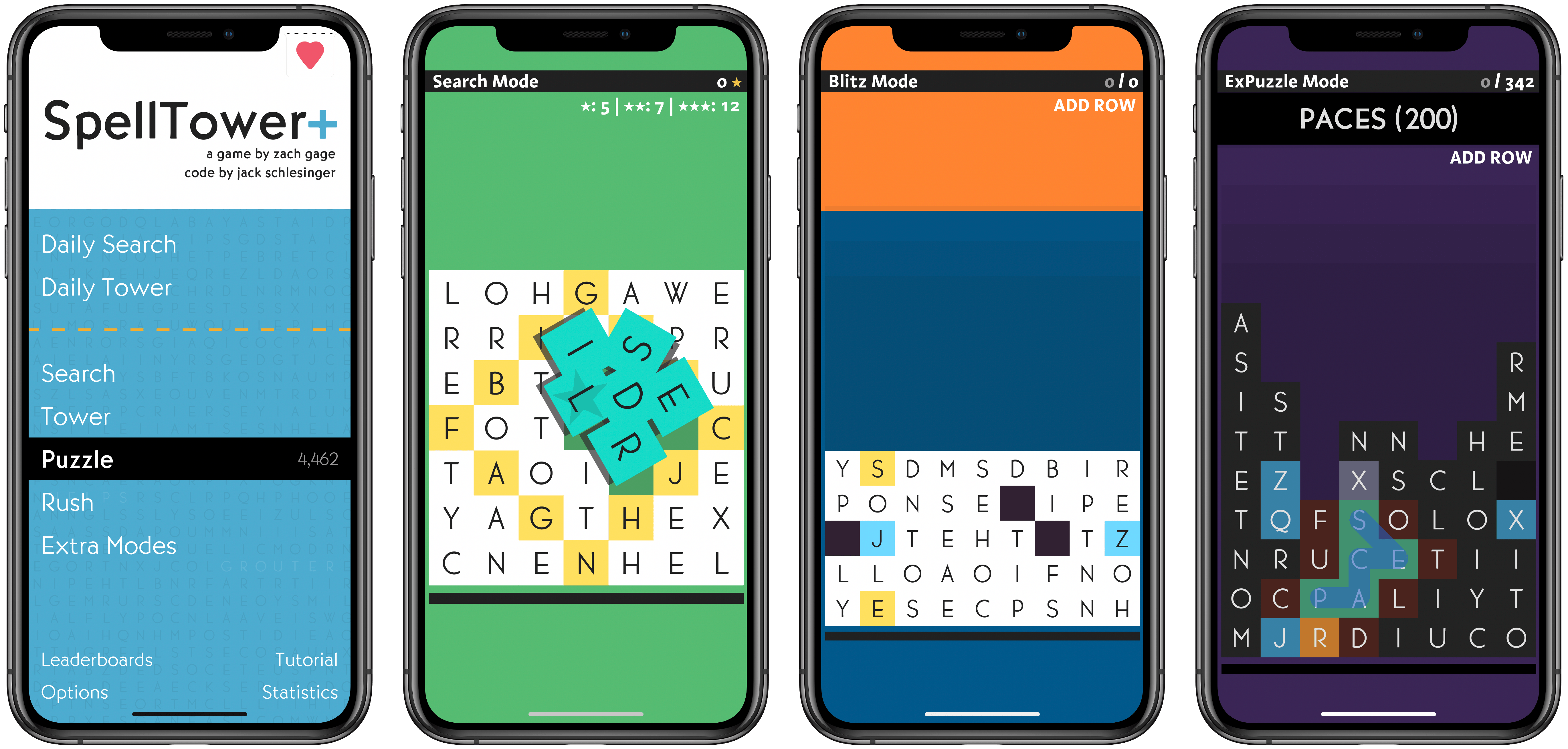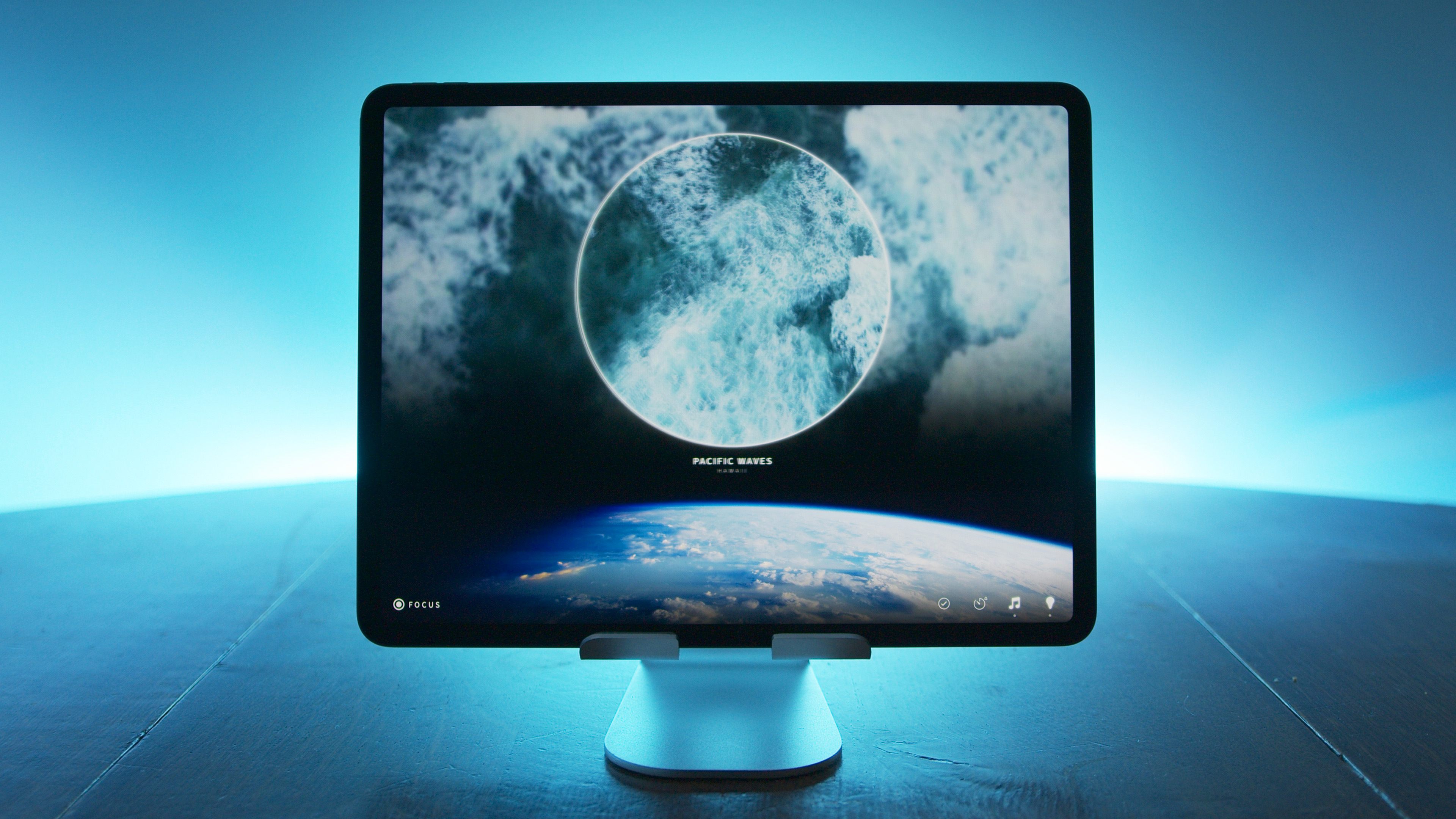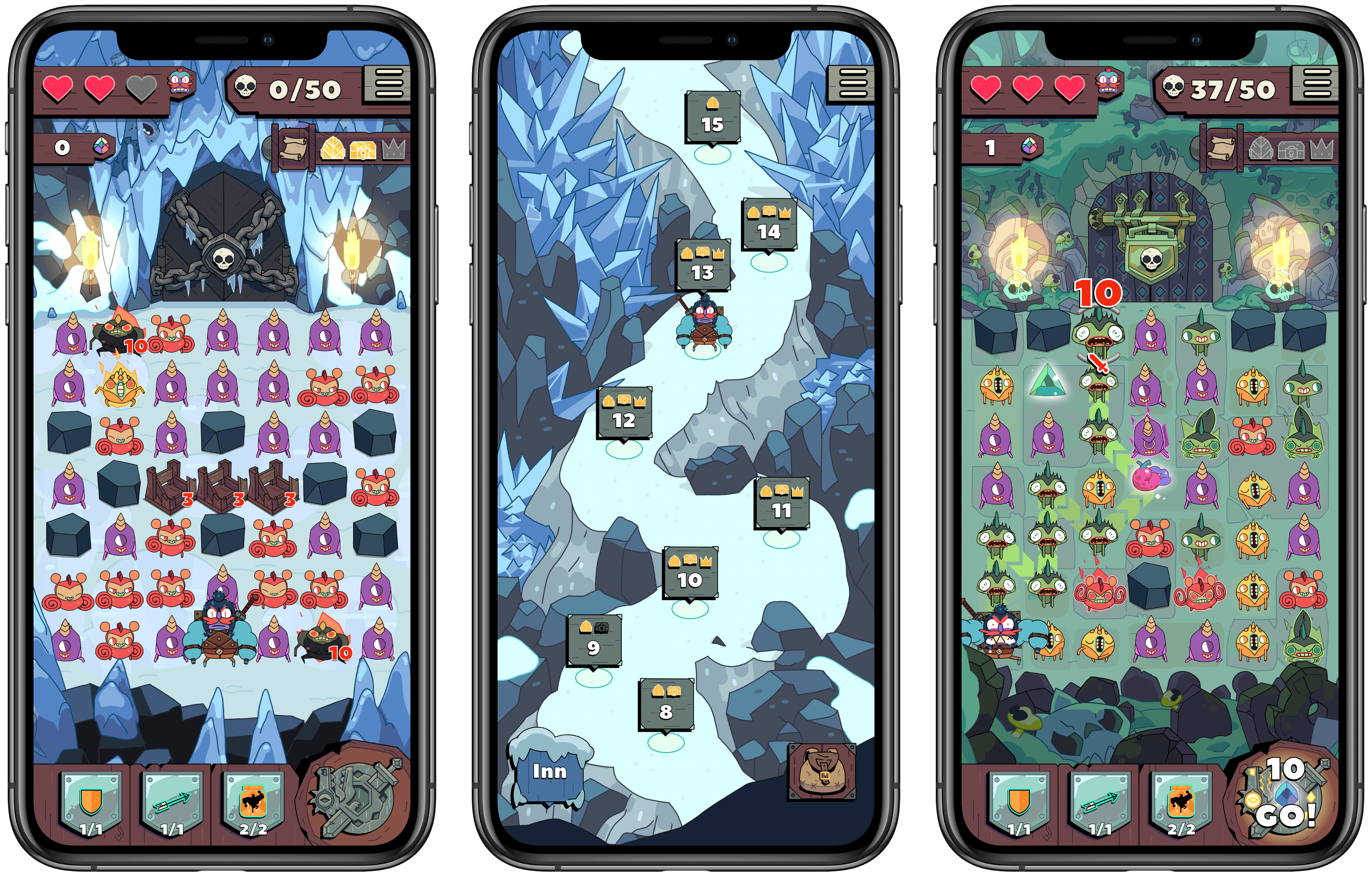Word game addicts, say goodbye to your family, friends, and productivity: Spelltower is back and better than ever. The newly launched Spelltower+ from Zach Gage and Jack Schlesinger takes the original game, modernizes it for the latest iPhone and iPad screen sizes, adds lots of new game modes, and packs several other key feature enhancements. Whether you’re a longtime Spelltower fan, or the game missed your radar entirely in its glory days, Spelltower+ deserves your attention.
The Omni Group Shares 2020 Roadmap→
As per tradition, The Omni Group has shared its product roadmap for the year ahead. Though these plans are always subject to change, especially pending new OS updates Apple will announce this June, the roadmap still gives a solid idea of where apps like OmniFocus, OmniOutliner, and more are heading.
Included on the roadmap is the launch of OmniPlan 4, expansion of OmniFocus for the Web features, simplifying licensing so you can authenticate your purchases with a sign-in rather than using activation codes, and automation improvements. Check out the full list of planned work here.
One section of the roadmap that stood out to me:
We’re also continuing to improve the flow of using our apps—particularly on iPad and iPhone. We want easy navigation, so everything in the app feels like it’s right at your fingertips—whether your fingertips are using the mouse, touch screen, or a hardware keyboard.
While this is a passing comment in the broader post, it’s also something that many developers fail to consider. Optimizing an app for different platforms, and those platforms’ respective strengths, takes a lot of work and careful thought. Devices like the iPad in particular can suffer from a lack of optimization – do developers optimize for touch input or that of a keyboard? In the age of the iPad Pro and iPadOS, the correct answer is “both.” I look forward to seeing what The Omni Group does in this area.
Portal Review: Immersive Ambient Noise with Philips Hue Integration
Ambient noise apps exist to help you focus or sleep, primarily. They provide a calming effect and complement mode-switching, whether that’s switching to a specific work project, switching from awake to asleep, or some other purpose. Portal, the ambient noise app that bears no relation to Facebook, works well for these purposes – in fact, focus and sleep are two of the three pillars Portal highlights in its name. However, the third pillar – escape – is what speaks most to the app’s distinct strength.
Portal doesn’t just offer a pleasant soundtrack to work or sleep by. As its name implies, its purpose is more specific and holistic than that, providing an escape portal into another environment entirely. Portal employs 3D soundscapes, Philips Hue integration, and imagination-inspiring visuals to make you truly feel, as much as possible, like you’ve escaped to a new place.
Reflections from the iPad’s Original Development Team→
Ryan Houlihan at Input has published a new interview with two key members of the team that birthed the iPad 10 years ago. Married couple Imran Chaudhri and Bethany Bongiorno, former Director of Design for the HI team and Software Engineering Director, respectively, reflect widely on the development process behind Apple’s tablet. Two of the most interesting answers had to do with envisioning the future of the iPad, and regrets about its past.
Chaudhri on the device’s future:
I think it’ll be interesting for all of us to watch and see how Apple evolves the iPad. But, you know, I think one of the struggles that customers have with the iPad right now is really trying to figure out what role it plays in terms of a portable class computer. You have a traditional desktop computer or a traditional laptop computer — and where does the iPad fit in? You know, I would hope and I think they would continue to evolve it to a point where the iPad does end up doing a lot more that the Mac [currently] does and that the Mac redefines itself as more of a professional tool and the iPad defines itself as more of a mass consumer computing platform. I think that would be almost like a natural progression.
Bongiorno on a regret:
I would say one regret is that it became really hard after we shipped the iPad to continue to push it forward in the way that I think Imran and myself and others at the company really wanted to. The gravity of the phone was so big — and it still is so big, right? It makes it really hard.
This week as the iPad’s 10 years are celebrated, it’s become a great time to reflect on where the device has come from and where it’s going. I use my iPad all day, every day for work, and love it. However, for the device to realize its fullest potential as a mass-market computer replacement, I think there’s still plenty of work yet for Apple to accomplish.
Little America Expanding to Apple Podcasts and Apple Books, Show’s Behind-the-Scenes Detailed→
Simon Thompson has an excellent, wide-ranging interview at Forbes with the production team behind Little America, the acclaimed Apple TV+ series that debuted recently.
Early on the interview covers why the team chose Apple for this show. Executive Producer Lee Eisenberg explains that unlike many other companies, who were “a little scared” by the pitch, Apple “almost immediately started selling themselves to us and trying to convince us why they should have it.” He attributes this to the series’ tone and spirit being a perfect fit for Apple’s brand. Eisenberg also explains how the company’s platform was a big draw:
“Apple is such a worldwide and multi-faceted brand. We’re doing a podcast to delve more into the stories and the music on the show. There’ll also be a playlist for every episode. We’re putting out a book too. Apple has an infrastructure that just felt like it would be able to touch all of the different pieces that we wanted.”
Word of a Little America podcast seemingly confirms reports of Apple developing original podcast content for its TV+ catalog. The whole paragraph, however, highlights the unique place Apple is in as a media hub. As I’ve written several times now, there’s tremendous potential for the company to utilize its various services in concert to provide experiences not possible anywhere else.
Another fascinating portion of the interview involved production challenges the team faced. Executive Producers Emily V. Gordon and Kumail Nanjiani share the story of a time the show, which centers around U.S. immigrant narratives, had to move production out of the country and into Canada due to an actor being unable to get a visa to enter the country.
“There was a Libyan actor who we were flying in to be in the show, but because of the new immigration laws, we couldn’t film that episode in America. We had to move production to Canada for an episode,” Gordon explained.
Nanjiani added: “For an episode about someone coming to America, who came here with refugee status, we could not shoot it in the US, which was crazy. We couldn’t get a visa for him. We really liked him and really wanted him for the part, so, luckily, Apple was kind enough to allow us, at great expense, to move production to Canada for one episode.”
What an incredible and fitting behind-the-scenes story for a series like this.
NapBot 1.3 Adds Independent Watch App, Today Widget, Notifications, and New Awake Minutes Trend
NapBot debuted last fall as a Swift UI-powered app that makes sleep tracking easy thanks to CoreML and a clean, simple design. The app recently received a variety of improvements via a 1.3 update that enhances both the watchOS and iOS components of NapBot.
On the watchOS side, NapBot now features a fully independent Watch app, meaning it can be downloaded from the Watch’s App Store and run without needing the iOS app installed. The current Watch app only shows sleep data for the previous day, rather than the full history that’s available on the iPhone, so I hope this release is just the first step toward offering full feature parity between watchOS and iOS apps.
Timed with its upgrade to independence, NapBot’s Watch app also now has complications available for every type of watch face and every complication size, so no matter which face is your go-to, you can find a fit for your sleep data.
The iPhone app now tracks a new trend, accessed from inside the Trends tab: Awake minutes. This enables keeping a pulse on how much time you spend awake during a normal night, and if the number doesn’t look good, NapBot will recommend you try reducing caffeine consumption during the latter parts of your day. If your Awake minutes trend shows just limited awake time, you’ll receive reassurance that brief waking periods can be perfectly normal.
Finally, NapBot has added a Today widget that documents your sleep data from the previous evening, and a notification in the morning to let you know sleep has been tracked. Using one or both of these options can reduce the need to open the full NapBot app as often and enable passive use instead, which I find ideal for a sleep tracking app.
The appeal of NapBot is in combining an easy-to-understand interface and effortless sleep tracking with data analysis powered by CoreML. Version 1.3 doesn’t change anything fundamental about the app, but it brings system feature integrations that make a meaningful difference in everyday use.
Apple Reveals Upcoming TV+ Lineup, including Amazing Stories, Central Park, Defending Jacob, and More
Over the weekend, Apple debuted its TV+ content lineup for the first half of 2020 at the Television Critics Association Winter Press Tour. This Press Tour is a tradition of the TV industry, where traditional networks and streaming services alike share about the new content they’ll be releasing soon. Apple got to join the festivities this year for the first time, detailing its TV+ lineup through early summer, including release dates for highly anticipated series we already knew about, plus the debuts of new shows that hadn’t been previously announced.
Arcade Highlights: Grindstone
When it comes to mobile games, all a new title has to do to draw me in is show a Candy Crush-style grid of objects. There’s something about the simple mechanic of making connections on a grid that’s hard for me to resist. Most of the time, though, I find that while such games can easily grab my interest, many will quickly lose it when I actually start playing. It’s usually just standard match three games that keep my attention, so when I first tried out Grindstone, I didn’t think it would be for me.
Grindstone is an Apple Arcade title from Capy and the creative team behind the excellent Superbrothers: Sword & Sworcery EP. It features a familiar grid of objects – in this case monsters to defeat – but rather than rearranging matching monsters in a Candy Crush fashion, you’re tasked with tracing a line from one matching monster to another, determining the order in which you’ll slay them and potentially earn rewards. Monsters have to be adjacent to each other for you to string them together, so essentially you’re completing a connect the dots puzzle each turn with as many monsters destroyed as possible.
The Case for Low Power Mode on the Mac→
Marco Arment on marco.org, outlining his self-created Low Power Mode-like system which relies on a third-party app, and making the case for Apple to add something similar as an official macOS feature:
The vast majority of the time I’m using it, the 16-inch MacBook Pro is a much better laptop with Turbo Boost disabled.
It’s still fast enough to do everything I need (including significant development with Xcode), while remaining silent and cool, with incredible battery life.
But soon, I bet I won’t be able to do this anymore.
Turbo Boost Switcher Pro relies on a kernel extension that’s grandfathered into Apple’s latest security requirements, but it can never be updated — and when macOS Catalina loads it for the first time, it warns that it’ll be “incompatible with a future version of macOS.” I suspect that this is the last year I’ll get to run the latest OS and be able to turn off Turbo Boost at will, making all of my future laptop usage significantly worse.
Low Power Mode is one of many useful features that iOS has had for years but that Mac users have been forced to live without. The feature’s popularity on iOS makes it a no-brainer addition for portable Macs, where battery life is already worse than what’s found in the iPhone and iPad.
Update: Former MacStories contributor TJ Luoma helpfully pointed out something that genuinely surprised me: Low Power Mode isn’t on the iPad either. Here’s hoping Apple brings it not only to the Mac, but the iPad as well.






